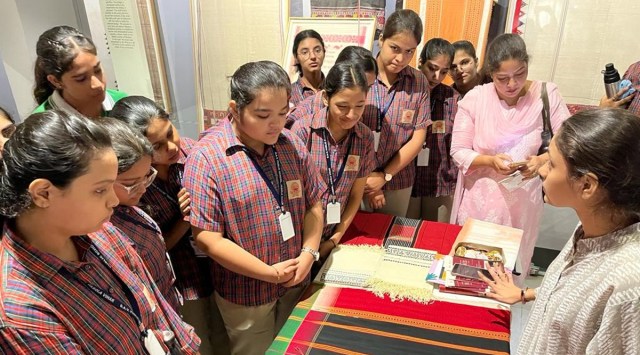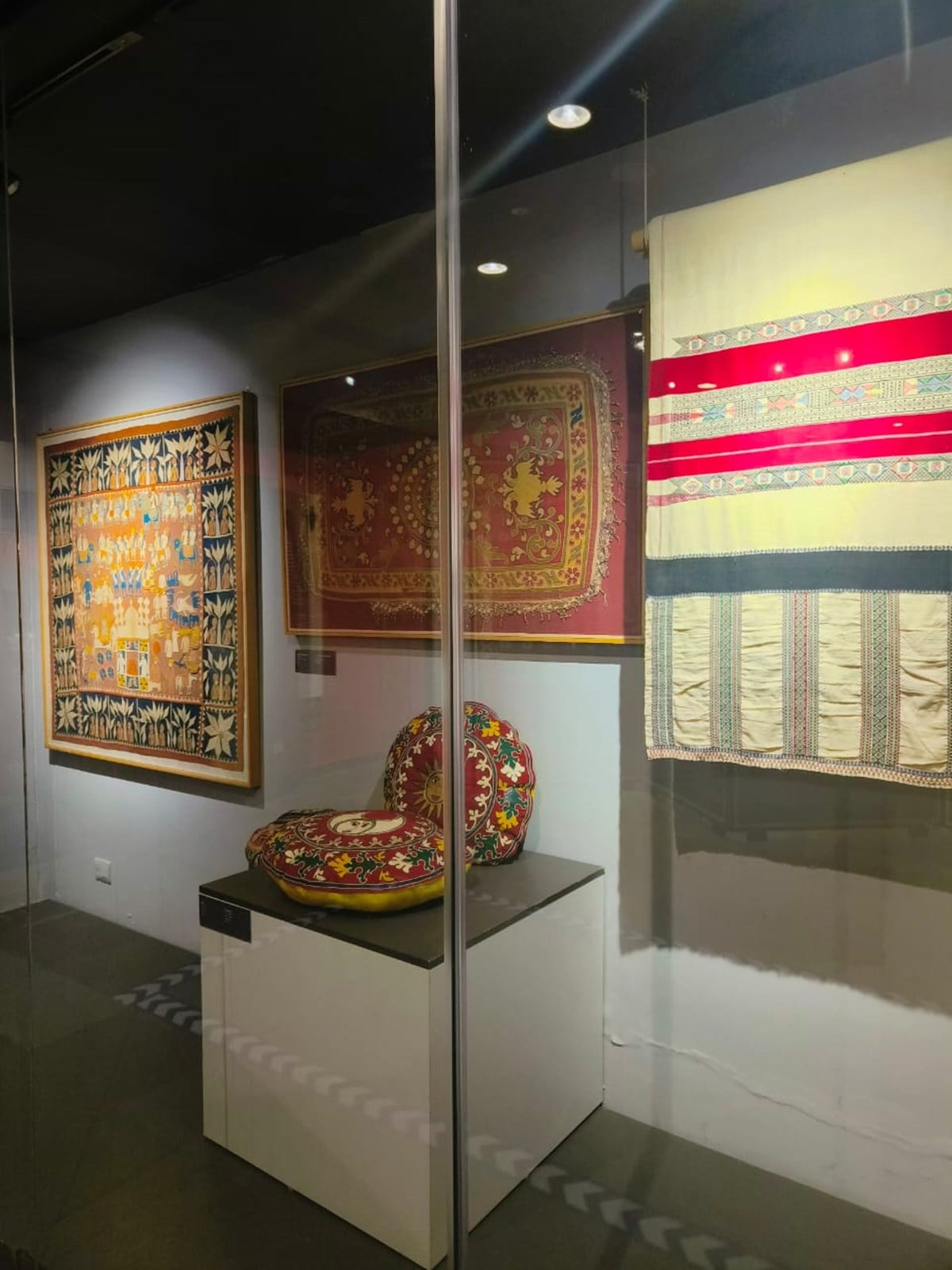📣 For more lifestyle news, click here to join our WhatsApp Channel and also follow us on Instagram
Ministry of Textiles initiative brings Indian handlooms closer for students
From Banarasi brocade to Paithani and ikat, school children were introduced to looms and different weaving methods.
 The National Institute of Fashion Technology with support from the Ministry of Textile got master weavers to hold demonstrations and keep students engaged.
The National Institute of Fashion Technology with support from the Ministry of Textile got master weavers to hold demonstrations and keep students engaged.Be it the bold geometry of Bagru or the floral beauties in Sanganeri prints, the tie-and-dye techniques of bandhani, or the leheriya, India boasts of numerous traditions in textiles that exist in various parts of the country. Bringing these stories alive was an educational initiative by the National Crafts Museum and Hastkala Academy, as part of the Ministry of Textiles’ campaign for school students.
To mark National Handloom Day on August 7, the two-week programme saw over 75 schools and nearly 10,000 students participate in specially curated Handloom Awareness Sessions, held at the National Crafts Museum.
 The two-week programme saw over 75 schools and nearly 10,000 students participate in specially curated Handloom Awareness Sessions.
The two-week programme saw over 75 schools and nearly 10,000 students participate in specially curated Handloom Awareness Sessions.
Called “#KnowYourWeave”, students were introduced to different process including Banarasi brocade, Andhra Ikat, Maharashtra’s Paithani, Bengal’s Jamdani and looms from the Northeast. The National Institute of Fashion Technology with support from the Ministry of Textile got master weavers to hold demonstrations and keep students engaged. Visitors were seen participating in different activities from block printing and dye painting to puppetry and weaving.
Well-known dyeing expert from Jaipur, Badshah Miyan, while talking to students about different dyeing techniques, said, “The perfect pH for indigo dye is 11-12 and so lime or jaggeries are added to balance the pH if and when required.” Then there was 65-year-old Kunj Bihari Darbar, a master block printer, who showed the uniqueness and historicity of Sanganeri block printed textiles to the visitors. This ancient manual technique involves a symphony of the block, the dye and the artist’s steady hand. From Manipur was a young weaver R Parmingla on the traditional strap-loom showing how a phanek is woven. While each skirt takes about 10 to 15 days to make, according to her, the most difficult part is to weave with the thin thread, which nearly takes a month to prepare.
 Called “#KnowYourWeave”, students were introduced to different process including Banarasi brocade, Andhra Ikat, Maharashtra’s Paithani, Bengal’s Jamdani and looms from the Northeast.
Called “#KnowYourWeave”, students were introduced to different process including Banarasi brocade, Andhra Ikat, Maharashtra’s Paithani, Bengal’s Jamdani and looms from the Northeast.
Tejaswani Nidhi, a Class 9 student from Kendriya Vidyalaya, who visited Crafts Museum, said, “I’m happy I got the opportunity to come there. It will definitely help me because I am going to take fine arts in the future. While we are so easily adopting Western ways, here are people who are still working hard to preserve India’s culture.”
📣 For more lifestyle news, follow us on Instagram | Twitter | Facebook and don’t miss out on the latest updates!
📣 For more lifestyle news, click here to join our WhatsApp Channel and also follow us on Instagram





- 01
- 02
- 03
- 04
- 05






















